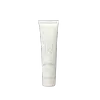What's inside
What's inside
 Key Ingredients
Key Ingredients

 Benefits
Benefits

 Concerns
Concerns

 Ingredients Side-by-side
Ingredients Side-by-side

Water
Skin ConditioningGlycerin
HumectantSqualane
EmollientCaprylic/Capric Triglyceride
MaskingCoconut Alkanes
EmollientGlyceryl Stearate
EmollientMeadowfoam Estolide
Skin ConditioningPEG-100 Stearate
Cetearyl Alcohol
EmollientC12-15 Alkyl Benzoate
AntimicrobialPhytosteryl Macadamiate
Skin ConditioningTriheptanoin
Skin ConditioningCoco-Caprylate/Caprate
EmollientMethylpropanediol
SolventLinoleic Acid
CleansingPhospholipids
Skin ConditioningPhytosterols
Skin ConditioningSodium Polyacrylate
AbsorbentTribehenin
EmollientCaprylyl Glycol
EmollientPhenoxyethanol
PreservativeDipalmitoyl Hydroxyproline
Skin ConditioningSodium PCA
HumectantUrea
BufferingDilinoleic Acid/Butanediol Copolymer
Hydroxyproline Palmitamide
Skin ConditioningHydroxyethyl Acrylate/Sodium Acryloyldimethyl Taurate Copolymer
Emulsion StabilisingIsohexadecane
EmollientCeramide Ng
Skin ConditioningTrehalose
HumectantSodium Phytate
PEG-10 Phytosterol
EmulsifyingHexylene Glycol
EmulsifyingPolysorbate 60
EmulsifyingPalmitic Acid
EmollientLactic Acid
BufferingPolyquaternium-51
Skin ConditioningTocopherol
AntioxidantTriacetin
AntimicrobialCastor Oil/Ipdi Copolymer
Sorbitan Isostearate
EmulsifyingSodium Hyaluronate
HumectantPalmitoyl Hexapeptide-12
Skin ConditioningWater, Glycerin, Squalane, Caprylic/Capric Triglyceride, Coconut Alkanes, Glyceryl Stearate, Meadowfoam Estolide, PEG-100 Stearate, Cetearyl Alcohol, C12-15 Alkyl Benzoate, Phytosteryl Macadamiate, Triheptanoin, Coco-Caprylate/Caprate, Methylpropanediol, Linoleic Acid, Phospholipids, Phytosterols, Sodium Polyacrylate, Tribehenin, Caprylyl Glycol, Phenoxyethanol, Dipalmitoyl Hydroxyproline, Sodium PCA, Urea, Dilinoleic Acid/Butanediol Copolymer, Hydroxyproline Palmitamide, Hydroxyethyl Acrylate/Sodium Acryloyldimethyl Taurate Copolymer, Isohexadecane, Ceramide Ng, Trehalose, Sodium Phytate, PEG-10 Phytosterol, Hexylene Glycol, Polysorbate 60, Palmitic Acid, Lactic Acid, Polyquaternium-51, Tocopherol, Triacetin, Castor Oil/Ipdi Copolymer, Sorbitan Isostearate, Sodium Hyaluronate, Palmitoyl Hexapeptide-12
Water
Skin ConditioningGlycerin
HumectantSesamum Indicum Seed Oil
EmollientPropylene Glycol
HumectantGlyceryl Stearate
EmollientVitis Vinifera Seed Oil
EmollientRosa Canina Fruit Oil
EmollientMacadamia Ternifolia Seed Oil
EmollientMangifera Indica Seed Butter
Skin ConditioningStearic Acid
CleansingPalmitic Acid
EmollientTriethanolamine
BufferingCaprylic/Capric Glycerides
EmollientPhenoxyethanol
PreservativePanthenol
Skin ConditioningCarbomer
Emulsion StabilisingChlorphenesin
AntimicrobialCaprylyl Glycol
EmollientAloe Barbadensis Leaf Juice
Skin ConditioningDisodium EDTA
Allantoin
Skin ConditioningLaminaria Ochroleuca Extract
Skin ConditioningGinkgo Biloba Leaf Extract
Skin ConditioningChlorella Vulgaris Extract
Skin ConditioningAlgae Extract
EmollientPrunus Cerasus Fruit Extract
AntioxidantFagus Sylvatica Bud Extract
TonicLavandula Angustifolia Oil
MaskingRosmarinus Officinalis Leaf Oil
MaskingPrunus Armeniaca Kernel Oil
MaskingMentha Piperita Oil
MaskingLinalool
PerfumingMentha Piperita Extract
CleansingChamomilla Recutita Extract
Skin ConditioningWater, Glycerin, Sesamum Indicum Seed Oil, Propylene Glycol, Glyceryl Stearate, Vitis Vinifera Seed Oil, Rosa Canina Fruit Oil, Macadamia Ternifolia Seed Oil, Mangifera Indica Seed Butter, Stearic Acid, Palmitic Acid, Triethanolamine, Caprylic/Capric Glycerides, Phenoxyethanol, Panthenol, Carbomer, Chlorphenesin, Caprylyl Glycol, Aloe Barbadensis Leaf Juice, Disodium EDTA, Allantoin, Laminaria Ochroleuca Extract, Ginkgo Biloba Leaf Extract, Chlorella Vulgaris Extract, Algae Extract, Prunus Cerasus Fruit Extract, Fagus Sylvatica Bud Extract, Lavandula Angustifolia Oil, Rosmarinus Officinalis Leaf Oil, Prunus Armeniaca Kernel Oil, Mentha Piperita Oil, Linalool, Mentha Piperita Extract, Chamomilla Recutita Extract
 Reviews
Reviews

Ingredients Explained
These ingredients are found in both products.
Ingredients higher up in an ingredient list are typically present in a larger amount.
Caprylyl Glycol is a humectant and emollient, meaning it attracts and preserves moisture.
It is a common ingredient in many products, especially those designed to hydrate skin. The primary benefits are retaining moisture, skin softening, and promoting a healthy skin barrier.
Though Caprylyl Glycol is an alcohol derived from fatty acids, it is not the kind that can dry out skin.
This ingredient is also used as a preservative to extend the life of products. It has slight antimicrobial properties.
Learn more about Caprylyl GlycolGlycerin is already naturally found in your skin. It helps moisturize and protect your skin.
A study from 2016 found glycerin to be more effective as a humectant than AHAs and hyaluronic acid.
As a humectant, it helps the skin stay hydrated by pulling moisture to your skin. The low molecular weight of glycerin allows it to pull moisture into the deeper layers of your skin.
Hydrated skin improves your skin barrier; Your skin barrier helps protect against irritants and bacteria.
Glycerin has also been found to have antimicrobial and antiviral properties. Due to these properties, glycerin is often used in wound and burn treatments.
In cosmetics, glycerin is usually derived from plants such as soybean or palm. However, it can also be sourced from animals, such as tallow or animal fat.
This ingredient is organic, colorless, odorless, and non-toxic.
Glycerin is the name for this ingredient in American English. British English uses Glycerol/Glycerine.
Learn more about GlycerinGlyceryl Stearate is a mix of glycerin and stearic acid.
It is used to stabilize the mixing of water and oil ingredients. By preventing these ingredients from separating, it can help elongate shelf life. It can also help thicken the product's texture.
As an emollient, it helps soften skin and supports barrier-replenishing ingredients.
In cosmetics, Glyceryl Stearate is often made from vegetable oils or synthetically produced.
This ingredient may not be fungal-acne safe
Fun fact: The human body also creates Glyceryl Stearate naturally.
Learn more about Glyceryl StearatePalmitic Acid is a fatty acid naturally found in our skin and in many plant and animal sources. In cosmetics, it is usually derived from palm oil. It serves many purposes in skincare, acting as a cleanser, emollient, and emulsifier.
As an emollient, palmitic acid helps soften and smooth the skin by preventing water loss. In cleansers, it helps remove oil and dirt while creating foam.
Its emulsifying properties help stabilize products by keeping water and oil-based ingredients from separating.
This may not be suitable for fungal acne-prone skin, as fatty acids like this can sometimes trigger breakouts in sensitive individuals.
Learn more about Palmitic AcidPhenoxyethanol is a preservative that has germicide, antimicrobial, and aromatic properties. Studies show that phenoxyethanol can prevent microbial growth. By itself, it has a scent that is similar to that of a rose.
It's often used in formulations along with Caprylyl Glycol to preserve the shelf life of products.
Water. It's the most common cosmetic ingredient of all. You'll usually see it at the top of ingredient lists, meaning that it makes up the largest part of the product.
So why is it so popular? Water most often acts as a solvent - this means that it helps dissolve other ingredients into the formulation.
You'll also recognize water as that liquid we all need to stay alive. If you see this, drink a glass of water. Stay hydrated!
Learn more about Water